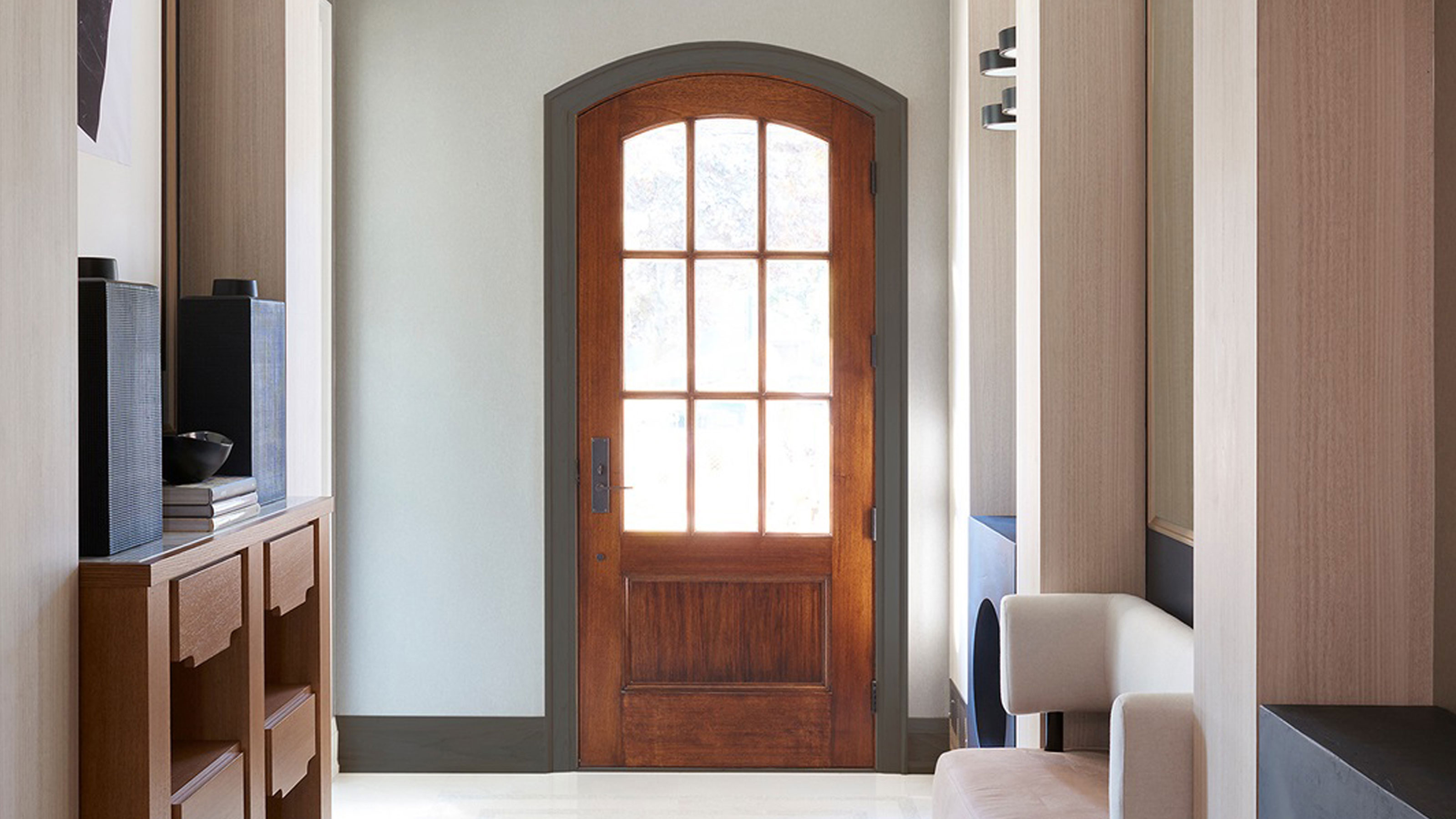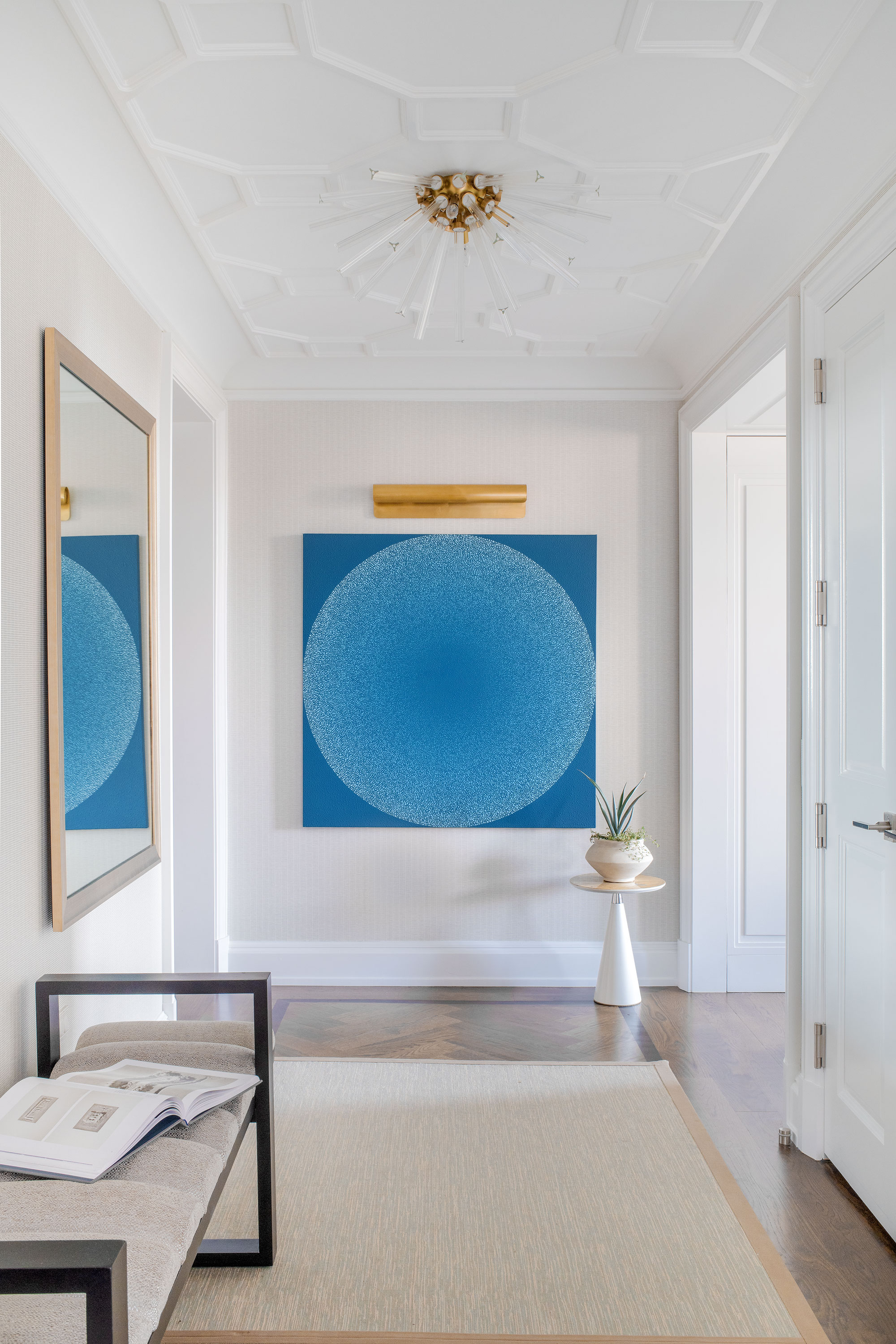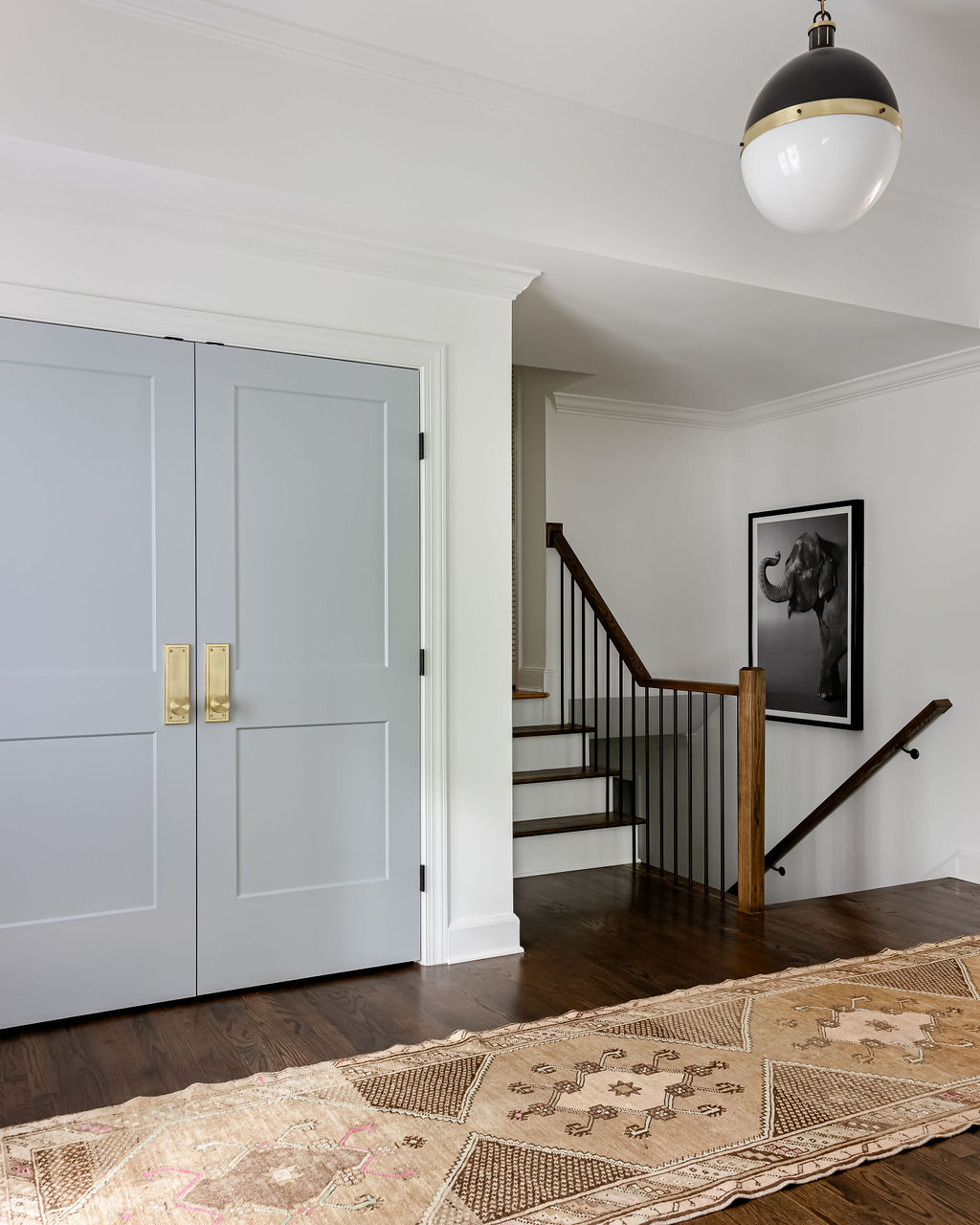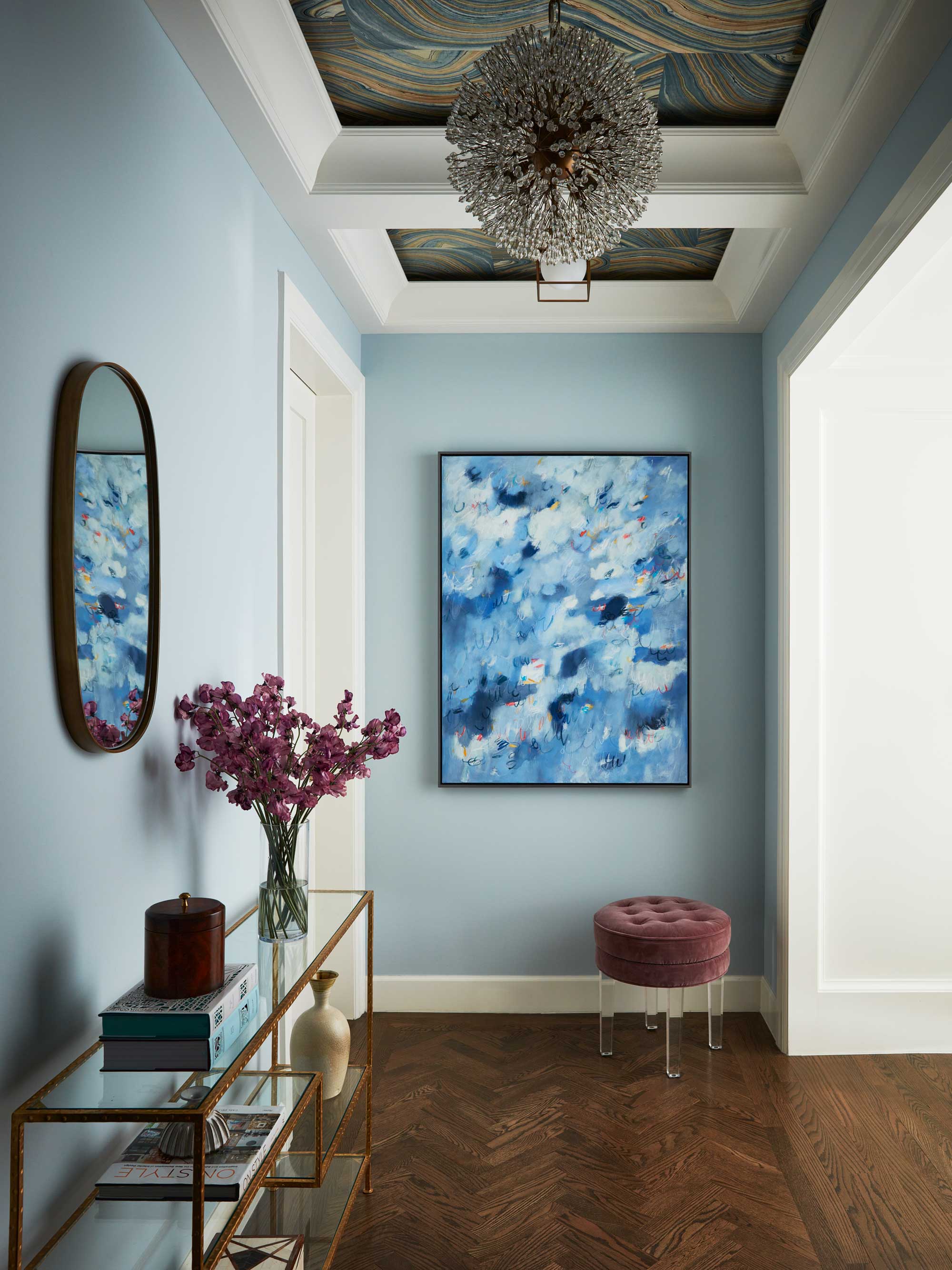
The entryway is your home’s first chance to make an impression, and it’s important that you pay close attention to your lighting scheme so that visitors feel welcome and at ease in your space.
Bad lighting in an entryway can mean you come home to a dark, unwelcoming home, that you're fumbling to take off shoes when you come in, or find your keys on your way out. And while that statement chandelier might look impressive in the daytime, at night, if its not delivery all of what your entryway needs, your lighting scheme won't be doing its job properly.
Below, interior designers share five common mistakes they always know to avoid when specifying entryway lighting ideas that you will want to be sure to avoid—but they also provide insight on what to do instead to create a stylish, functional space.
1. Not Considering Aesthetics, Mood, or Quality

While function is always key as it pertains to lighting, form is important, too, notes Staver Gray, co-principal of New York-based interior studio Ward + Gray. “We like to treat the entry with a unique design language and select a statement light that can set the tone for the rest of the house,” she says.
Lori Smyth, founder of shade brand Tulip, echoes similar sentiments. “This is your home’s first impression and how your entryway feels sets the stage for the vibe in the rest of your home and how it feels is all about the lighting,” she says. “When I was building spec homes, my main focus was to make sure that first impression made buyers excited about the second impression.”
With that comes the importance of opting for a quality fixture. “Just like door hardware, investing in quality lighting creates a strong first impression about the overall design,” says Cindy Rinfret, the founder of nterior design studio Rinfret, Ltd.
2. Not Being Mindful About Bulb Choice

The lightbulbs you choose for your entryway fixtures will play a significant role in shaping how the space feels. When it comes to cool light vs warm light, Lori Smyth recommends the latter, specifically 2700 kelvin bulbs. “[Even] if you can't change the fixture, replace the existing bulbs with 20 or 40 watt bulbs and/or install a dimmer,” she offers. “Low light equals sexy and that is how we all want to feel — and light a candle!”
Just be sure to not go too dim, particularly if you opted for dark entryway finishes or it lacks natural light, notes Danielle Chiprut, the founder of Danielle Rose Design Co. At the same time, lights that are too bright won’t suffice either. “Overly bright or cold lighting can feel clinical and impersonal, which isn’t the welcoming vibe most people want to create at their front door,” the designer explains.
3. Not Paying Attention to Scale

You will want to ensure that the light fixture you choose for the entryway appropriately fits the size of your space. “I often see entryway lights that are either too large or too small for the space,” says Heather Hilliard, the founder of Heather Hilliard Design. “Generously sized foyers need a significant piece to ground the space and draw the eye in.” Hilliard notes that smaller and more narrow entryways will oftentimes lack natural light and require supplementary fixtures; sconces are an excellent choice.
However, you'll also need to consider head clearance when designing an entryway that doesn't have high ceilings, meaning often a semi-flush design is the best choice. Interior designer Ben Marshall says that whatever you choose, make sure there's at least 7' clearance to the floor so that it's comfortable for even your tallest guests.
Price: $54.08
With LED bulbs and a diffuser, this semi-flush light will cast a soft, wide glow around your entryway, and it has plenty of five star reviews.
Price: $159.99
A flush design that's full of character? We love the idea of a few of these ceiling lights dotted along an entryway to make sure it's bright and welcoming.
Price: $298
If you haven't got space to do something bold with the drop of your light, you can always add character with a design with an interesting mount, such as this one from Anthropologie.
4. Relying on a Single Light Source

The more fixtures in the entryway, the merrier. “Incorporate layers of lighting such as overhead fixtures, sconces, and even floor or table lamps to add depth and texture to the lighting design,” says Sarah West, the founder of Sarah West Interiors. “Relying on a single light source can make the space feel flat or unevenly lit.”
Should your light fixtures match? Not necessarily, but give your lighting scheme a common design language by using a throughline of material or style to pull them together, and ensure you use similar light temperatures to ensure things look cohesive when all the lamps are turned on.
5. Not Looking to Your Home's Aesthetic for Reference

The lighting you place in the entryway should make sense in the context of your home as a whole. “Choose lighting that complements the architecture of the home and enriches your home’s personality,” Sarah says. “A fixture that doesn’t fit with the rest of the design can disrupt the flow of the space.”
This isn't to say that in an older home, you need to pick period lighting — rather, be inspired by the size, shapes and forms that your space was designed to house, even if you choose to modernize your pick with something a little more contemporary.
The biggest mistake you can make with entryway lighting? Not really considering it until after you've finished your remodel of the space. While it's easy to get carried away picking a fixture, planning what your entryway actually looks like when its lit up in the evenings is the best idea for a space that's cozy and welcoming to come home to.







